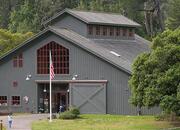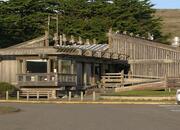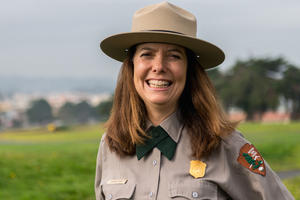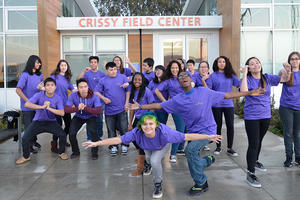
Point Reyes National Seashore website >>
Point Reyes National Seashore Association website >>
The southern half of Point Reyes National Seashore is a 71,028-acre designated wilderness area with more than 70 miles of trails and several hike-in campgrounds. It is a nationally important nature preserve within which existing agricultural uses are allowed to continue. The mix of commercial and recreational uses—historic ranching and oyster farming—was the reason the area was designated a National Seashore rather than a National Park.
The peninsula includes wild coastal beaches and headlands, estuaries, and uplands and the northernmost part is maintained as a reserve for tule elk. The preserve is also rich in raptors and shorebirds.
Point Reyes National Seashore is a separate national park unit from the Golden Gate National Recreation Area.
Visitor Centers
Bear Valley Visitor Center
Excellent exhibits, maps, and park information can be found at this center. Just west of the Center’s parking lot is the 0.6-mile paved Earthquake Trail that takes you on an informational walk through key features of the San Andreas Fault zone.
Kenneth C. Patrick Visitor Center
Located at beautiful Drake’s Beach this center contains exhibits focused on 16th-century maritime exploration, marine fossils, and marine environments.
Lighthouse Visitor Center
Located 45 minutes west of Bear Valley on the Point Reyes Headlands, at the end of Sir Francis Drake Blvd., the Center is a 650 meter (0.4 mile) uphill walk from the parking lot. Browse exhibits on the historic Point Reyes Lighthouse, whales, seals, sea lions, wildflowers, birds, and maritime history.
Plan Your Visit
- Summers are often cold and foggy and winters generally clearer.
- The Bear Valley Trail is the most popular hike in the park
- Look for oyster shells and sand dollars at the north end of Drake’s Bay.
- Check out the Visitor Centers on a rainy day.
The tule elk (Cervus Canadensis) is a subspecies of North American elk that occurs only in California. Once near extinction, tule elk can now be found in several locations within the park. The best chance of seeing them is in the Tule Elk Preserve at Tomales Point.





